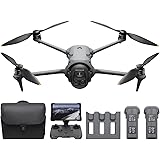The Unconventional Guardians of the Sky: Repurposed Training Planes Hunting Drones
In a world increasingly reliant on advanced military technology, Ukraine has found a remarkable solution in an unexpected place: old training planes. These aircraft, originally designed for pilot instruction with simple wooden propellers, are now critical assets in the nation’s **drone defense** network. They symbolize a powerful shift in military thinking, prioritizing resourcefulness and cost-effectiveness when facing relentless aerial assaults. These agile planes, typically the Soviet-era Yak-52, prove that necessity truly is the mother of invention on the battlefield.
The method of interception is as daring as it is unconventional. A gunner, exposed to the elements by an open canopy, aims an assault rifle at fast-moving Russian Shahed drones just a few hundred meters away. This close-quarters engagement is necessary because newer drone models fly higher and faster than their predecessors, making ground-based interception much more challenging. Pilots and gunners like Serhii often fly above the drones to spot them, then descend rapidly to shoot from below, a tactic demanding exceptional skill and precision.
Despite their simplicity, these planes demonstrate incredible resilience in harsh conditions. Serhii recounts flying in temperatures as low as minus 24 degrees Celsius, a testament to the dedication of these crews. Finding these stealthy drones presents a significant challenge, as the planes lack onboard radar systems due to weight constraints. They must rely heavily on ground intelligence and the sharp eyes of their gunners, which limits operations to daylight hours and clear weather conditions, yet they consistently achieve impressive results.
The Economics of Asymmetric Warfare: Cost-Effective Drone Interception
The strategic genius of using training planes for **drone defense** lies squarely in the economic imbalance it creates. A vintage Yak-52 can be acquired in Europe for as little as 50,000 euros, a sum that is notably less than the estimated cost of a single Russian Shahed drone. This stark contrast becomes even more striking when compared to the millions of euros NATO forces recently spent to down similar Russian drones over Poland, highlighting Ukraine’s pragmatic approach.
This “thrift born of necessity” is a direct response to Russia’s tactic of overwhelming air defenses with cheap, numerous drones. Reports indicate that Russia routinely launches over 500 Shahed drones daily, not including additional reconnaissance drones. Intercepting every single one with expensive missiles or scrambling multi-million dollar F-16 jets is simply unsustainable for Ukraine. The commander, Taras, proudly shares how one of his teams downed a Shahed with just five bullets, illustrating the extreme cost-efficiency of their operations. This innovative strategy dramatically conserves valuable high-tech munitions for more critical targets.
Beyond the direct cost savings, this approach protects Ukraine’s most advanced military assets. There have even been reports of F-16 jets being damaged by debris when attempting to shoot down drones at close range. By utilizing cheaper, more easily replaceable aircraft for these missions, Ukraine minimizes the risk to its prized, yet scarce, modern fighter jets. This careful resource allocation is a cornerstone of their broader military calculus, ensuring that every asset is deployed where it can have the maximum strategic impact.
Evolving Threats: Adapting to Modern Drone Warfare
The battlefield is a constant cycle of innovation and counter-innovation, and **drone defense** is no exception. While Ukraine has developed effective low-cost interception methods, Russian drone technology continues to evolve rapidly. Newer models are not only flying higher and faster but are also increasingly equipped with sophisticated cameras. These cameras serve a dual purpose: identifying targets on the ground and, more recently, spotting intercepting aircraft or other drones.
This evolution means that Ukrainian crews face an increasingly complex and dangerous environment. AI or remote operators can now analyze the situation and guide drones through evasive maneuvers to shake off their pursuers. What might have once been a straightforward interception can now turn into a prolonged chase, sometimes lasting up to 40 minutes, testing the physical and mental endurance of the pilots and gunners. Taras notes that crews often return “drenched in sweat and exhausted” after these demanding engagements.
The responsibility carried by these crews is immense. As Taras explains, a single error could mean a drone reaching its target, causing significant damage or loss of life. While flying the planes might not be physically arduous in itself, the mental strain of knowing the consequences of failure is profound. This constant adaptation to new threats underscores the dynamic nature of modern warfare, where technology and human ingenuity are locked in an unending contest, continually pushing the boundaries of strategic thinking.
Broader Implications: Ukraine’s Innovative Air Defense Strategy
Ukraine’s pragmatic approach to **drone defense** offers invaluable lessons extending far beyond its borders. The efficacy of their strategy is undeniable, with Ukrainian authorities reporting a downing rate of approximately 90% for Russian drones, a figure largely corroborated by international observers who estimate it around 85%. This success rate, achieved with rudimentary equipment, highlights the power of ingenuity in military strategy, proving that cost-effectiveness does not necessarily equate to reduced capability.
This layered defense system, integrating cheaper solutions like training planes with more advanced assets, allows Ukraine to use its F-16s for situations where a drone is too fast or in an inaccessible location. This strategic allocation of resources is crucial in conserving expensive high-tech missiles and aircraft for high-priority threats. The model of using varied defensive layers, from simple and cheap to advanced and costly, could provide a blueprint for other nations, including NATO and EU members, facing similar low-cost, high-volume drone threats.
The conflict demonstrates that modern **drone defense** requires flexible and adaptive solutions rather than relying solely on conventional, expensive systems. As Russia continues to produce drones cheaply and in vast numbers, the economic burden on defending nations using traditional methods becomes unsustainable. Ukraine’s innovation shows that a combination of existing resources, clever tactics, and immense courage can provide a highly effective, albeit challenging, answer to asymmetric warfare.











